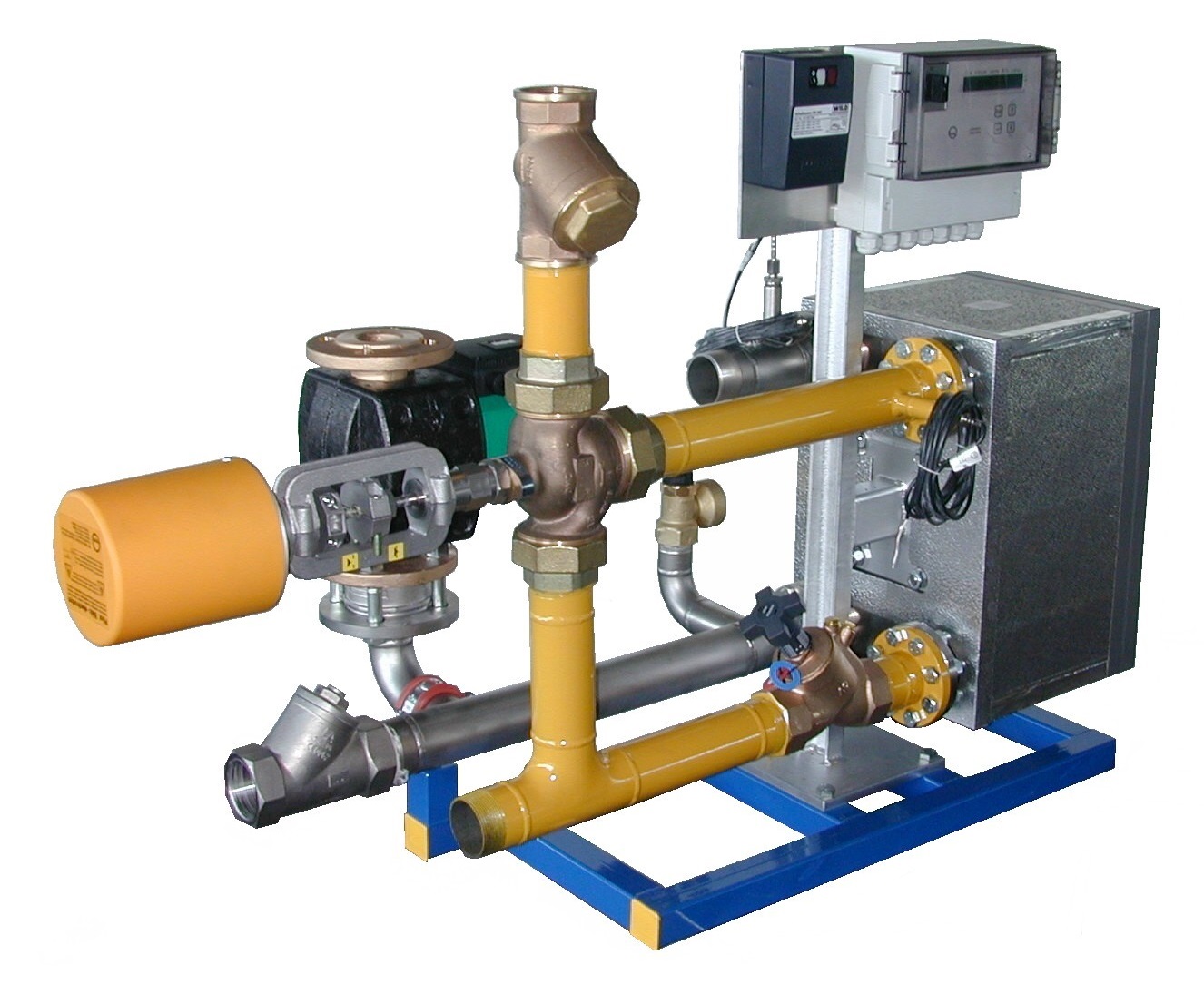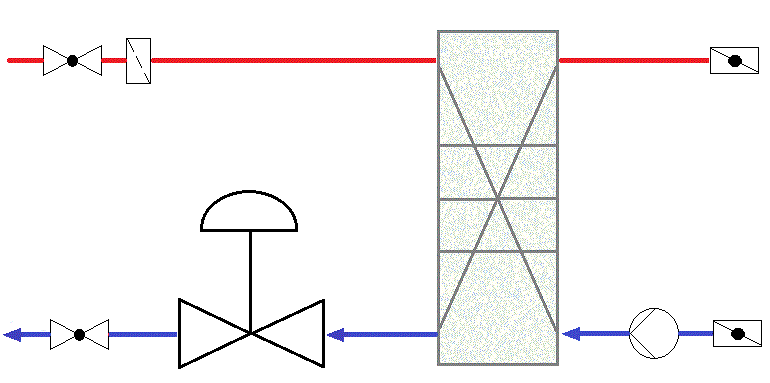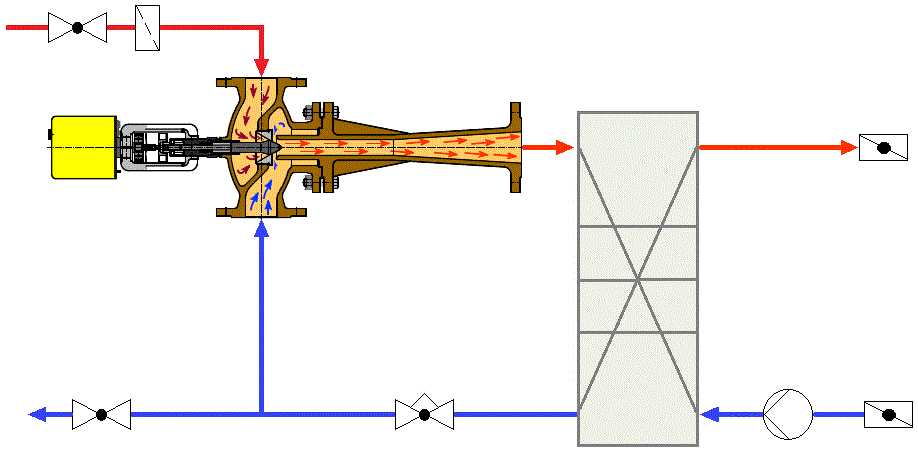 The decrease in the water temperature of the primary flow line by adding the return flow with the jet pump reduces the temperature spread and thus increases the quantity of water passed over the heating surface
The decrease in the water temperature of the primary flow line by adding the return flow with the jet pump reduces the temperature spread and thus increases the quantity of water passed over the heating surface
The admixture control using the jet pump on the primary side of the heat exchanger is the decisive improvement compared to the throttle circuit.
This difference results in the following advantages for the entire system:
The use of a jet pump instead of the control valve permits admixture without any additional costs worth mentioning.
Most heat exchangers are still controlled by a throughway valve in throttle circuit. This throughway valve is used to control the mass flow in dependence on the power demand of the consumer connected to the heat exchanger .
In this setup the primary flow temperature is always equal to the temperature entering the heat exchanger. This inlet temperature is not dependent on the load, but is defined by the operator of the primary network.
This results in a big temperature difference between the inlet on the primary and on the secondary side. This temperature difference produces thermal tensions in the heat exchanger. Tensions are a frequent cause for damage, in particular in plate heat exchangers. Moreover, a big temperature difference causes a low quantity of water. This in turn results in bad heat exchange due to transition to laminar flow. Complicated conditions are produced for control.
Conventional variant Variant with jet pump

